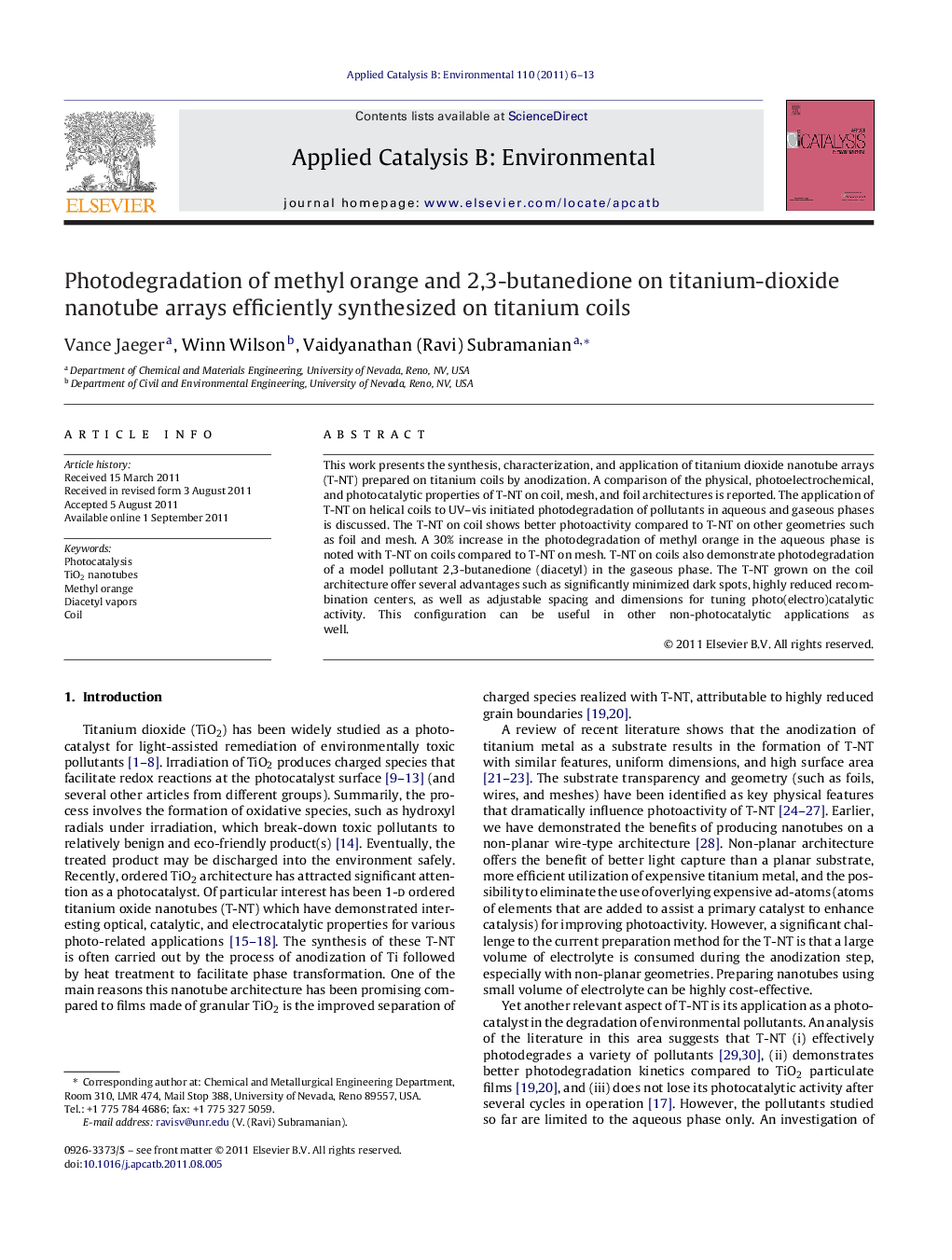| Article ID | Journal | Published Year | Pages | File Type |
|---|---|---|---|---|
| 46568 | Applied Catalysis B: Environmental | 2011 | 8 Pages |
This work presents the synthesis, characterization, and application of titanium dioxide nanotube arrays (T-NT) prepared on titanium coils by anodization. A comparison of the physical, photoelectrochemical, and photocatalytic properties of T-NT on coil, mesh, and foil architectures is reported. The application of T-NT on helical coils to UV–vis initiated photodegradation of pollutants in aqueous and gaseous phases is discussed. The T-NT on coil shows better photoactivity compared to T-NT on other geometries such as foil and mesh. A 30% increase in the photodegradation of methyl orange in the aqueous phase is noted with T-NT on coils compared to T-NT on mesh. T-NT on coils also demonstrate photodegradation of a model pollutant 2,3-butanedione (diacetyl) in the gaseous phase. The T-NT grown on the coil architecture offer several advantages such as significantly minimized dark spots, highly reduced recombination centers, as well as adjustable spacing and dimensions for tuning photo(electro)catalytic activity. This configuration can be useful in other non-photocatalytic applications as well.
Graphical abstractFigure optionsDownload full-size imageDownload as PowerPoint slideHighlights► TiO2 nanotubes (T-NT) on coils identical to T-NT on foil and mesh. ► Methyl orange degradation using T-NT on-coil (X = 0.5) > Mesh (X = 0.3) > foil (X = 0.2). ► Gas phase degradation of diacetyl vapors using T-NT on coils show X = 0.45. ► T-NT on coils offer minimal (i) dark spots and (ii) recombination centers.
